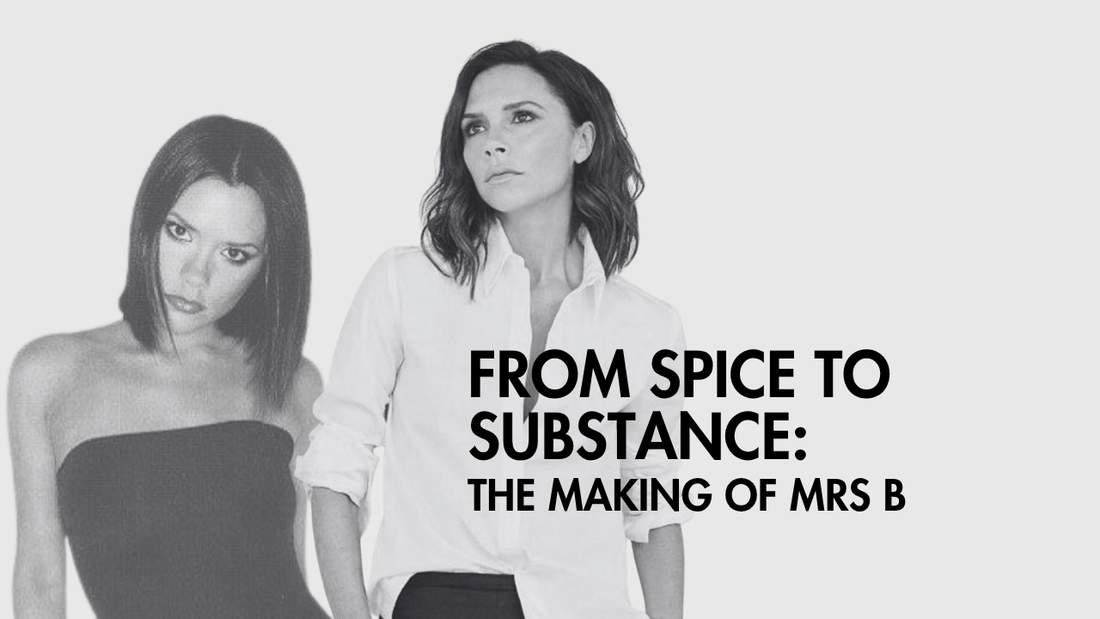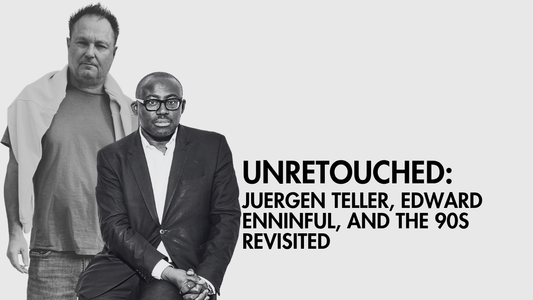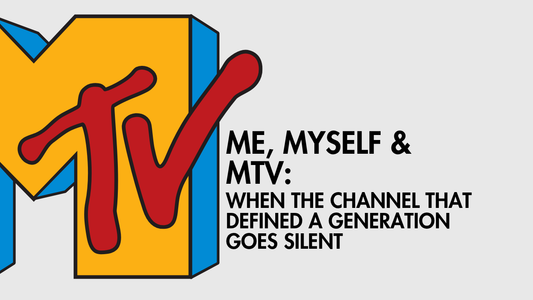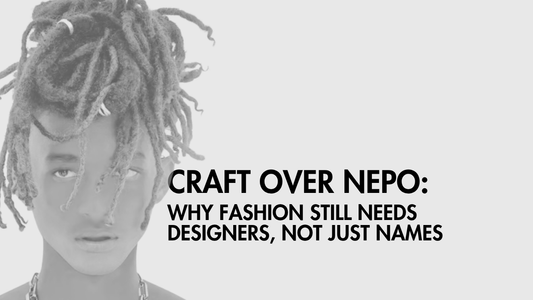
From Spice to Substance: The Making of Mrs B
Share

Written by Massimo Casagrande
The past week, most of us have been indulging in Netflix’s Victoria Beckham series,
well, most of us Mrs B aficionados, that is. And what a guilty pleasure it was.
While there have been documentaries before, this is the second to focus on her
career as a designer. Back in 2013, The Skype Collaboration Project was launched
as a platform to inspire and enable young creatives and allow exclusive access to
experts in the industry through its online platform.
One of these projects was Five Years - The Victoria Beckham Fashion Story; it
promised a rare view into her creative process; video calls, fittings, fabric swatches,
and all. It was meant to show the woman behind the myth. And for some, there was
a chance to ask questions via video messages with Mrs B herself! (Skype up your
life! sorry). I remember all too well watching it. A small Skype blue logo flickered on-
screen and connected the world to Victoria Beckham’s studio, a designer in motion,
a team at work, a brand finding its language.
At the time, the idea felt radical. Fashion films weren’t yet streaming phenomena.
Sure, we’d had Signé Chanel (2005), Marc Jacobs & Louis Vuitton (2007), and Le
Jour d’Avant (a backstage of the catwalk shows released in 2009), all by journalist,
documentary filmmaker and YouTuber Loïc Prigent, who offered us glimpses into
these exclusive creative worlds, but “access” still meant glossy editorials, not
webcams. Vogue UK described it as a “ground-breaking storytelling format,” one that
invited audiences to see her as more than the poised figure on a front row.
But it was also a risk: an early experiment in digital transparency. That, and the fact
that the world wasn’t ready to believe that a former pop star could also be a serious
designer. The documentary’s tone was almost cautious, she was proving herself,
showing the work, trying to build trust in real time. For every viewer intrigued by her
precision and discipline, another dismissed it as branding dressed up as intimacy.
On a side note, it was also a strategic way for Skype to attract a younger generation,
and essentially lure them away from Google Hangouts, we know how that ended.
Fast forward to more than a decade later, and Netflix’s Victoria Beckham arrives in a
very different world. One that no longer questions her legitimacy. The tone has
shifted from Can she design? to How did she get here?
The new series is polished, cinematic, structured, and self-aware. It is populated by
a more refined circle of voices: Jürgen Teller, Tom Ford, Anna Wintour, and Donatella
Versace. A cast that reinforces how far Victoria Beckham has come since those early
Skype days. There’s a brilliant irony, too, when she recalls years ago, during her
Posh Spice era, how she once “redesigned” a Versace dress, an act that left
Donatella less than impressed.
Mentors like Roland Mouret grounded her early ambitions in rigour. “From the top,
where she is, I had to bring her back to the bottom to learn,” he recalls in the series,
a reminder that humility is often the foundation of craft. It also nods lightly to the
elephant in the room: the long-held suspicion that Mouret was the real hand behind
her early collections, a reflection less of fact than of how reluctant the industry was to
believe her skill could match her fame. Yet those doubts only seem to underline how
deliberately she earned her credibility, one collection at a time.
It’s through these relationships and lessons that the series gains its depth, weaving
past and present as it builds towards her Paris Fashion Week show, with a pacing
that recalls Loïc Prigent’s Le Jour d’Avant: the fittings, the late decisions, the weather
threatening to ruin everything. It captures the tension that never quite makes it to the
headlines.
This series is a portrait of someone whose credibility within the industry has been
hard-won. It’s a full-circle moment that says everything about how far Mrs B has
travelled, from playful imitation to genuine recognition. The storytelling is refined,
deliberate, and strategic. But it’s also surprisingly human. She talks about scrutiny,
body image, and the endless need to prove herself.
What it shows is not reinvention, but perseverance. And the woman behind it all is
still very much Mrs B. There’s a tenderness that runs throughout, especially in the
moments with David: the teasing, the laughter, the quiet partnership that grounds all
the discipline. It’s a reminder that behind the brand there’s a genuine connection built
on love and respect, proof that authenticity doesn’t have to shout to be felt.
It's the honesty about the struggle that makes the Netflix series striking. It shows how
fashion isn’t easy, not even for the famous. She speaks openly about her company’s
financial challenges, about what it takes to keep a brand alive. There’s vulnerability
in her transparency, a quiet admission that success isn’t selective. Even for
celebrities, creative work demands resilience. Even Victoria Beckham, with her fame
and fortune, needed twenty years to be taken seriously, and eventually profitable.
For some, the series is too polished, too curated. But perhaps that polish is the story,
after all it is Posh Spice we’re talking about.
The contrast between Skype’s raw immediacy and Netflix’s cinematic calm mirrors
not just Victoria Beckham’s evolution, but fashion’s too. The first was a plea for
credibility. The second, a meditation on endurance.
In the end, the series is about a woman who outlasted opinion by trusting her own
rhythm. In a culture obsessed with immediacy, that’s the quietest, and perhaps most
powerful, victory.
For emerging designers, her journey is a reminder that credibility is built quietly, not
overnight; that the work of being taken seriously is often invisible. Victoria Beckham’s
path from Skype calls to Netflix screens isn’t a rebrand, it’s proof that perseverance
can outlast perception.
Because sometimes, the most radical thing a designer can do is stay long enough
for the story to change.
written by Massimo Casagrande



